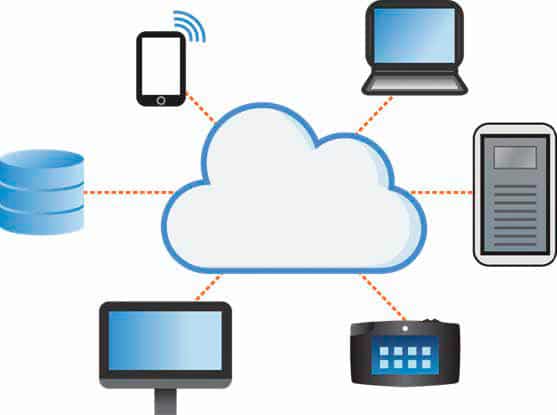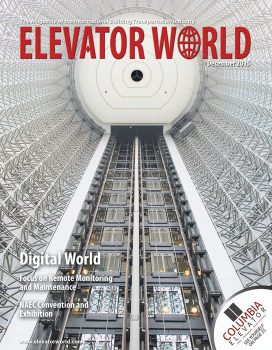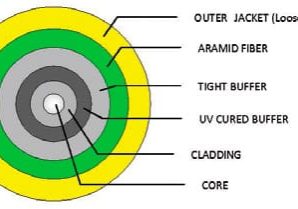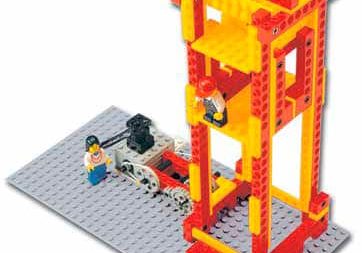In this Readers Platform, your author makes the case for the ability of cloud software to enhance accuracy, productivity and accountability, while lowering costs.
With so many cloud software solutions available today, how do you decide which best fits your field and back-office personnel’s needs? Some offerings have intelligent programming built into their platforms to help field technicians with complex surveys, as opposed to solutions with less-sophisticated, editable PDF files. The intelligence factor provides the most flexibility and greatest return on investment from a longterm cost savings standpoint, in the form of productivity increases upward of 50%. With labor costs today, such a significant productivity boost makes a good case for implementation of intelligent cloud software.
The testing, inspection and certification (TIC) market continues to be what it was generations ago. Cloud technology is now only starting to become a part of the everyday lives of field personnel involved with operations. While the technology involved in testing and inspecting equipment has continued to expand to ensure greater safety, those consistently looking at the equipment have only scratched the surface in terms of leveraging cloud technology. For that reason, it is worthwhile to look at some of its advantages and what it can do for you and your business.
One key aspect of TIC that has benefitted tremendously from technology is field operations. This is a direct result of the industry’s heavy reliance on accurate data collection and field-visit tracking. Companies, municipalities and jurisdictions all around the world are turning to cloud-based mobile software applications to better record, catalog and track data. What was once the domain of paper, pens and thick paper files is quickly turning to the Internet, mobile devices and, ultimately, the cloud. Many organizations are scurrying to find an application that can assist with their processes, make them more efficient and allow for growth far beyond what was once imaginable.
The accuracy of a piece of equipment’s information and the ability to instantly track its history are vital to ensuring it operates safely. On the administrative side, great efficiencies can be achieved by reducing the number of staff and/or hours required to process information. Lastly, automated data collection and storage can enhance the customer experience when reports are made available instantaneously.
The Cloud and Going Mobile
Because technology can be used to create a single, centralized source of data and information, it is easier and less costly to locate, share, communicate and utilize available information. No longer are multiple offices needed to support a large organization. Now, cloud-connected field personnel can work directly from their homes, yet access data as if they were in a large, networked office.
Mobile applications utilizing the cloud are significantly changing data collection and reporting methods. A field technician armed with a mobile device loaded with interactive forms allows for a more comprehensive and accurate site visit. The forms’ predefined, intelligent fields cover every aspect of the process, providing personnel with all relevant information. Built-in error-checking functionality monitors the findings and sounds an alert for any data inconsistencies or contradictions, as well as any input that was neglected. As it is instantaneously transmitted wirelessly back to the cloud, secure information is immediately available to all stakeholders.
Photography, GPS and Audit Trails
Due to the inclusion of cameras in almost every mobile device, mobile applications offer the option of attaching multiple digital images to a visit report. Such images complement written reports, and offer a new way to review a site visit after leaving a location. Giving customers access to this data also serves as a powerful tool to educate them about their equipment, helping them understand the results of a visit and explaining what can be done to mitigate potential safety hazards.
The global positioning system (GPS) has allowed companies to pinpoint employees’ locations while on the job. GPS also allows field personnel to determine where they are going, how fast they will get there and what they need to do when they arrive. This is carried over to clients, who know personnel’s expected arrival time.
Electronic records enable audit trails and accountability that help an organization’s decision makers substantiate observations. Decision makers can, for example, use electronic records to show that all required tasks were performed in accordance with manufacturer specifications, legal requirements and schedule.
Because visit-related documents and information are securely stored in the cloud, they can be easily archived, located and retrieved, which significantly reduces incidents of misfiled or lost information. Clients, as well as users, benefit from this comprehensive recordkeeping.
New Venues of Communication in the Cloud
Technology has enabled much greater and easier communication of information and education among industry stakeholders. Savvy organizations have taken everything from specification sheets to operating manuals and placed them in the cloud. The once-tedious process of manual research—which discouraged many—has been transformed into information being available and searchable 24/7.
New methods of communication about and within an industry run the gamut from websites to blogs to Twitter to RSS feeds to Facebook. It is no longer accurate to assume people get most of their information from newspapers and local television stations. For the TIC industry to remain relevant and up-to-date on technology, it must continue to increase awareness about the importance of equipment safety and communicate this through all the various venues available.
An example of how significantly communication within the industry has changed is illustrated by the example of equipment failure. In the past, unfortunate incidents were communicated in local news outlets and, perhaps, some trade publications. It was easy to miss them. At best, you got word of them days or weeks after the fact, usually well after the accident had occurred. With 24/7 news availability, however, accidents can be communicated and explored almost simultaneously with their occurrence, as evidenced by the recent reporting on and swift investigation of a fatal escalator accident in China (ELEVATOR WORLD, November 2015). The rapid dissemination of information via channels like Twitter may be the key to saving lives one day in the future.
Technologies on the Horizon for the Cloud
Which types of technological developments utilizing the cloud can we expect in the industry in the near future? One key development will likely be the adoption of equipment capable of two-way communication.
Imagine walking into a building and each piece of equipment automatically sends data to your mobile device. You would immediately have a listing of all the equipment in the facility and be able to access all stored information about that equipment. This would include information from the last company that serviced or repaired it, as well as the current status of its safety devices. Mobile devices will ultimately allow for a 24/7 view of a piece of equipment and issue alerts anytime something potentially unsafe occurs.
Early Adopters Lead the Way
A small group of early adopters leads the way in investing in technology to make their processes easier and more efficient. The majority watch from the sidelines to see how it all unfolds. Some resist change at all costs, primarily due to the idea that their data is no longer nestled in an office server, but rather out in the vastness of the cloud. Many in this group will say cloud data is not secure. To the contrary, cloud data storage allows for stronger security checks than an internal system, as well as monitoring and constant backup.
How rapidly the TIC market will continue to embrace technology is still unclear. It is up to all of us to continue to communicate its benefits. A concerted effort to move forward will serve to cement our role as a progressive industry that embraces change and opportunity. As a wise man once said, “Either you evolve or you go extinct.”

Get more of Elevator World. Sign up for our free e-newsletter.










